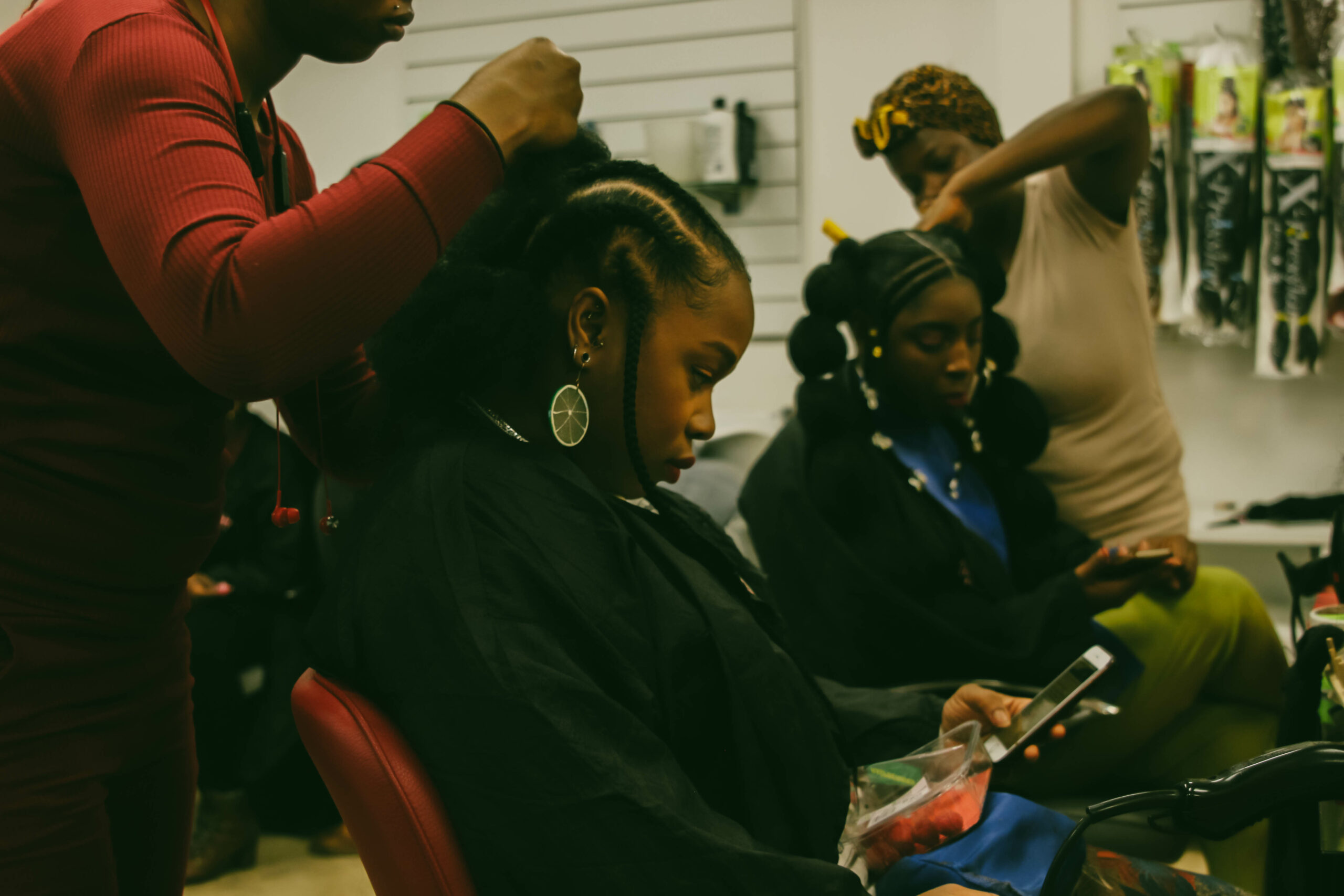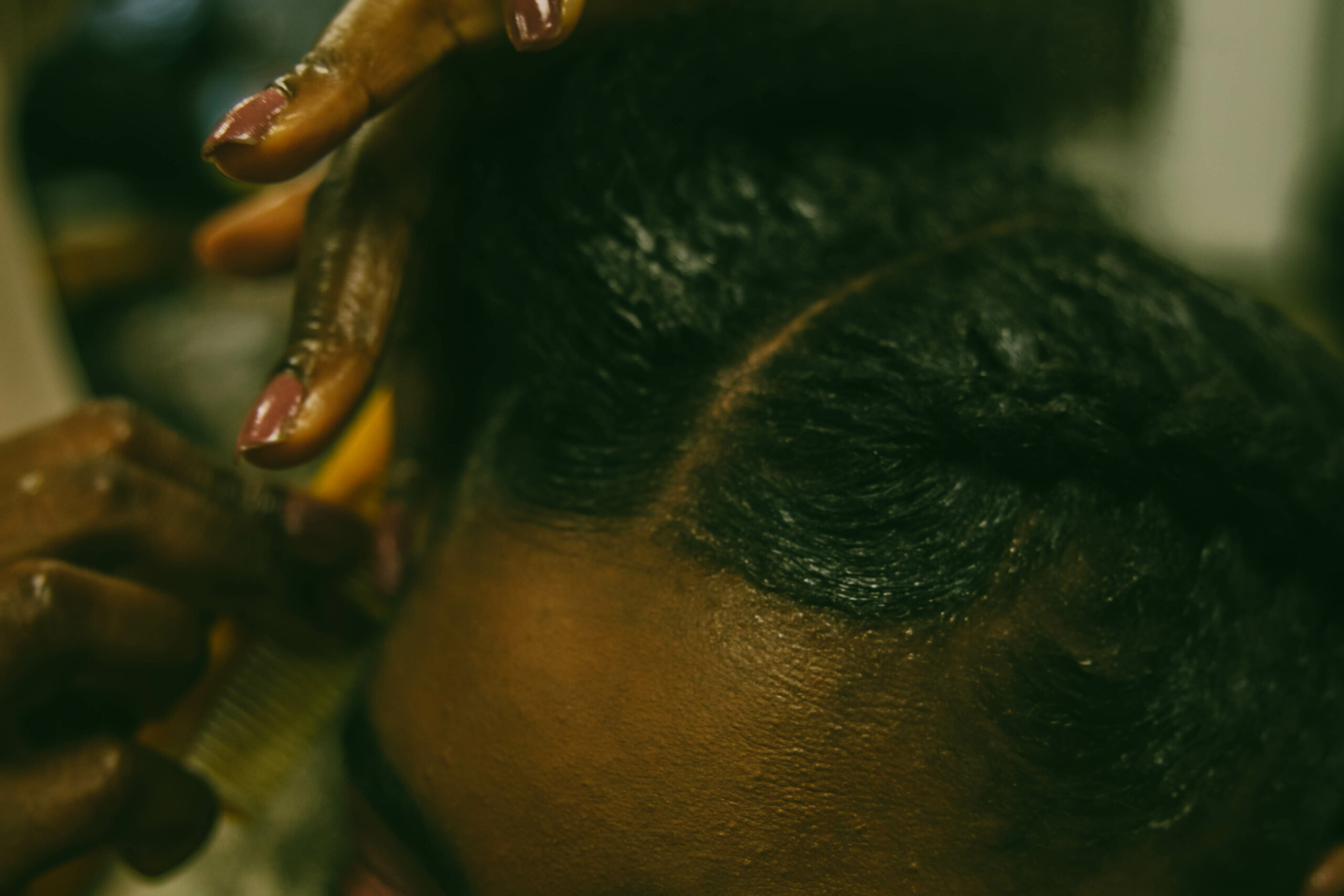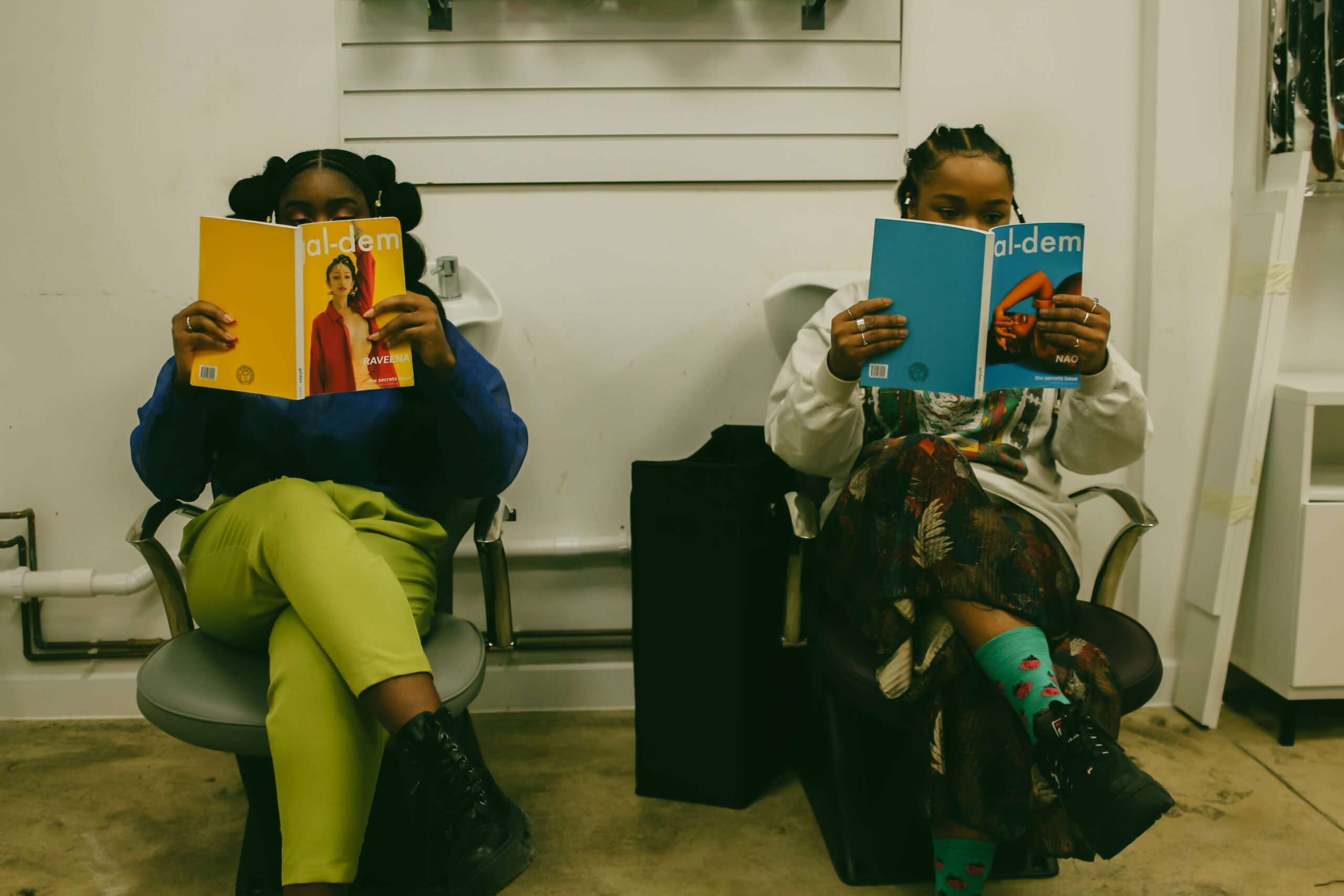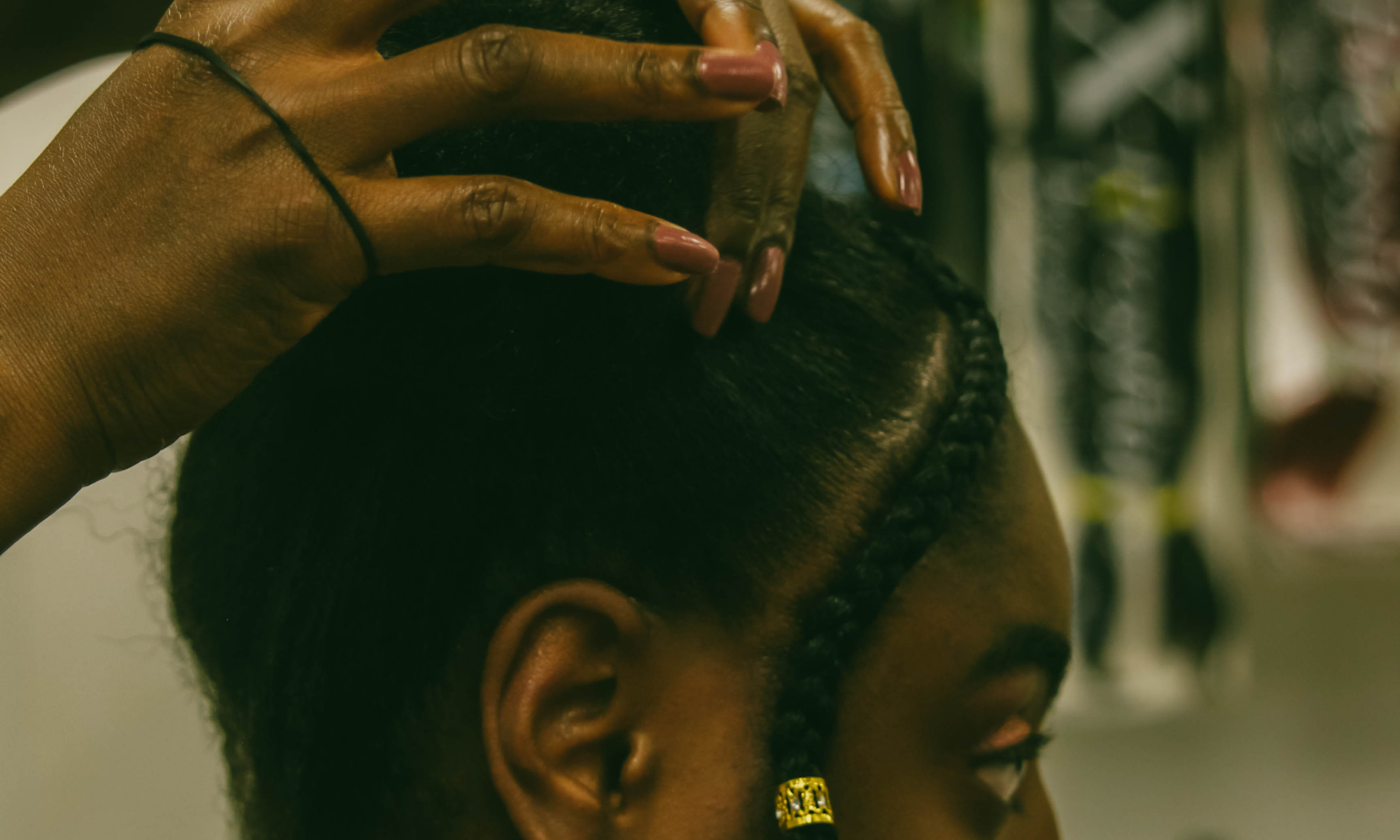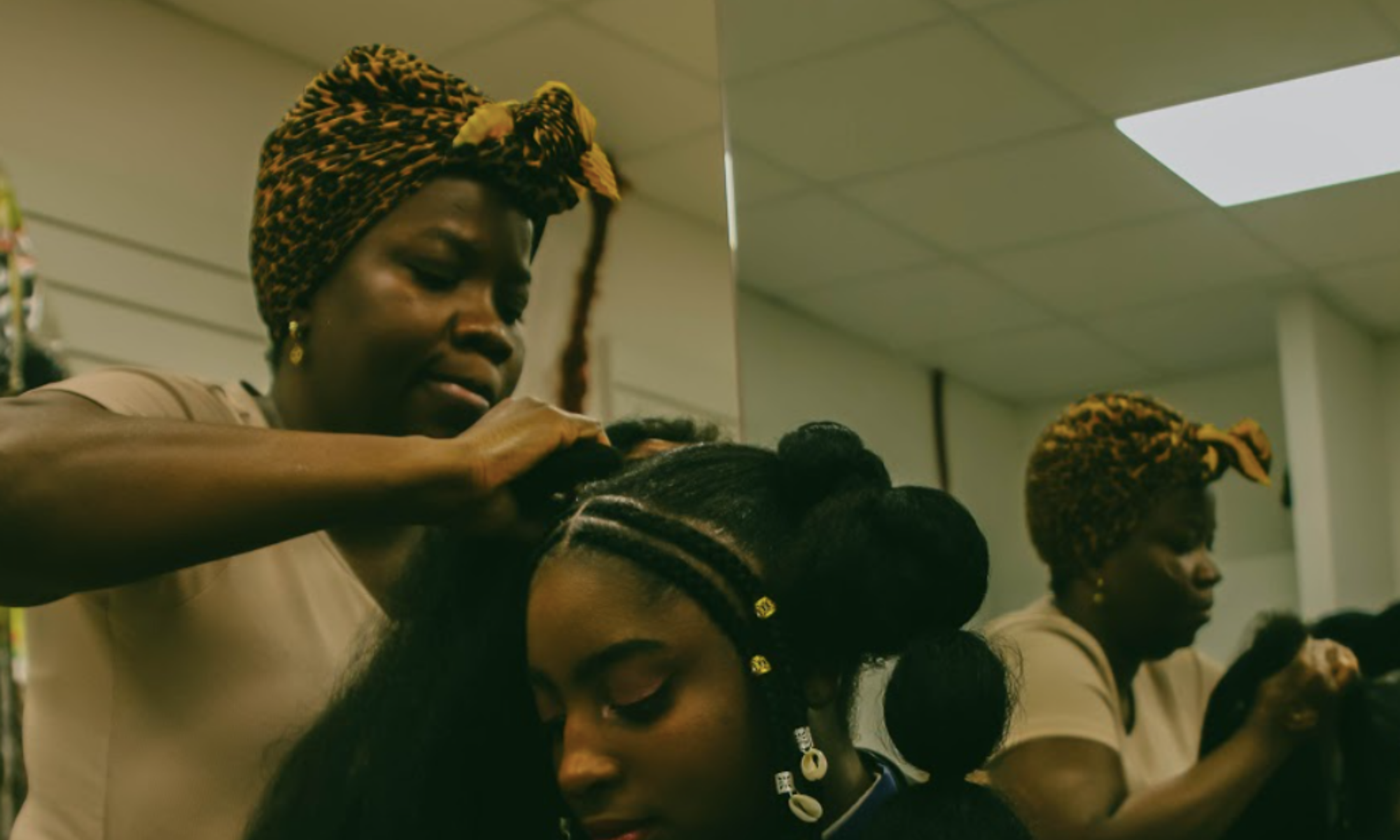
Photography by Yossy Akinsanya / Peckham Palms
Afro Answers: why you should protect your nape while wearing headwraps and choosing the best fabric
Whether your hair needs some TLC or you’re trying out a new style, trichologist Ebuni Ajiduah takes you through how to look after your locks when it’s all wrapped up.
Ebuni Ajiduah
27 Feb 2021
For the last year, many of us have been hiding our hair during Zoom meetings with our cameras off wearing our bonnets and head scarfs. Now, with salon openings on the horizon, I personally will have to restrain myself from hugging the first aunty who asks “you want to do your hair?” as I walk down the high street with my hair clearly done.
Black women have a long history with an assortment of head coverings. Different cultures and religions may require women to adorn their heads with material for a variety of reasons. In modern culture, headwraps have become the staple style, especially for those who are not interested in learning how to braid or just need something simple because really, who is checking for us at the moment? Although I do enjoy being called “empress” by the local Rastaman, my headscarf does not signify anything other than I probably didn’t have ample time for styling.
With a variety of styles and materials available, it can be hard to know which one will be the best for our hair without an expensive trial and error process. So, I will let you know how to keep your hair safe under a head wrap or wig.
The natural hair movement told us to ditch towels years ago because of the effect it can have on our hair – the fabric is quite rough and soaks up too much moisture. The same principle should be applied to the materials used to wrap our hair. Cotton is often too absorbent and can cause friction on the strands leading to knotting and breakage. Silk or satin are the gold standards but quality can vary widely.
These fabrics (well actually satin is a type of weave so it can be made of almost any material) are superior because they offer a friction-free surface for our hair to lay against which can reduce frizz, keep our hair moisturised and help to prevent breakage and tangling no matter how rough you sleep. Both types may have a dull/shiny side – you want the shiny side touching your hair.
“With a variety of styles and materials available, it can be hard to know which one will be the best for our hair”
Before you start to obsess over labels or gawk and the prices of genuine silk, consider Ankara head scarfs. They are a great fashion accessory, colourful and bright enough to dress up any style, but the cloth can be harsh for the reasons listed above. So you want to try and find one that has been lined with a silk or satin material that will have a smoothing effect on the hair. It’s also possible to double up and use a bonnet or second scarf to protect the hair under an unlined scarf. My two favourite brands owned by Black women are Knots UK and Eze wraps.
Confession time: while I love a headwrap and can boast a wide selection if you saw me in one, it usually meant that I skipped washday and my twist-out or high puff is no longer suitable for public consumption. Just believe it was a whole mess under there and I’m not proud to say it, but my bad hair habits would make you give me a serious side-eye. In any case, do as I say and not as I (sometimes although less frequently) do.
Protect the borders
When wearing scarves, the hairline is more prone to damage. This could be because it has been tied too tightly or just because of where the material sits. Most of the focus goes to the edges but just as much damage can be done at the nape. I really like The Wig Fix as it is a solution intended for wig wearers but is useful for anyone looking to protect those delicate hairs. It can also double as a barrier between the headscarf and your hair, so I often recommend it to clients who usually wear their hair in this style or in a hijab to prevent traction. If it leaves lines or gives you a headache it is way too tight.
Look after your ends
As the oldest part of the hair, the ends are the most fragile and easily damaged. It can be tempting to just stuff your hair under a wrap and go but take a little time to style the hair. Even a simple bun with the ends tucked can be sufficient and will really help with length retention. Other options include plaits, twists or canerows. The beauty is no one will see how good or bad your braiding is, it just needs to be good enough to hold the hair in place.
It’s not everyday headscarf
It may be that you have to keep your hair covered for most of the time but try to get a few hours a day where your hair is not tied up or restricted. Keeping the hair tucked away even in the safest fashion can still lead to traction alopecia as the hair is constantly held in one direction. If you do start to notice signs of hair loss, try as much as possible to reduce the pressure by wearing looser styles and seeking the help of a trichologist.
Regular terms and conditions apply
Wearing a headscarf can be a break from the day to day task of looking after your hair, however, it is not an excuse to neglect or forgo normal care practices. All the same, rules apply. If you want to consider it a protective style then make sure it meets the requirements of one.
A few days here and there should not be a major concern but if you find yourself constantly rocking a scarf to avoid taking care of your hair then maybe you need some support to make a regime that fits into your lifestyle.
This is part of the Afro Answers column. If there are any afro hair questions you would like answers to in a future column, email them to charlie@gal-dem.com with the subject line “Afro Answers”

